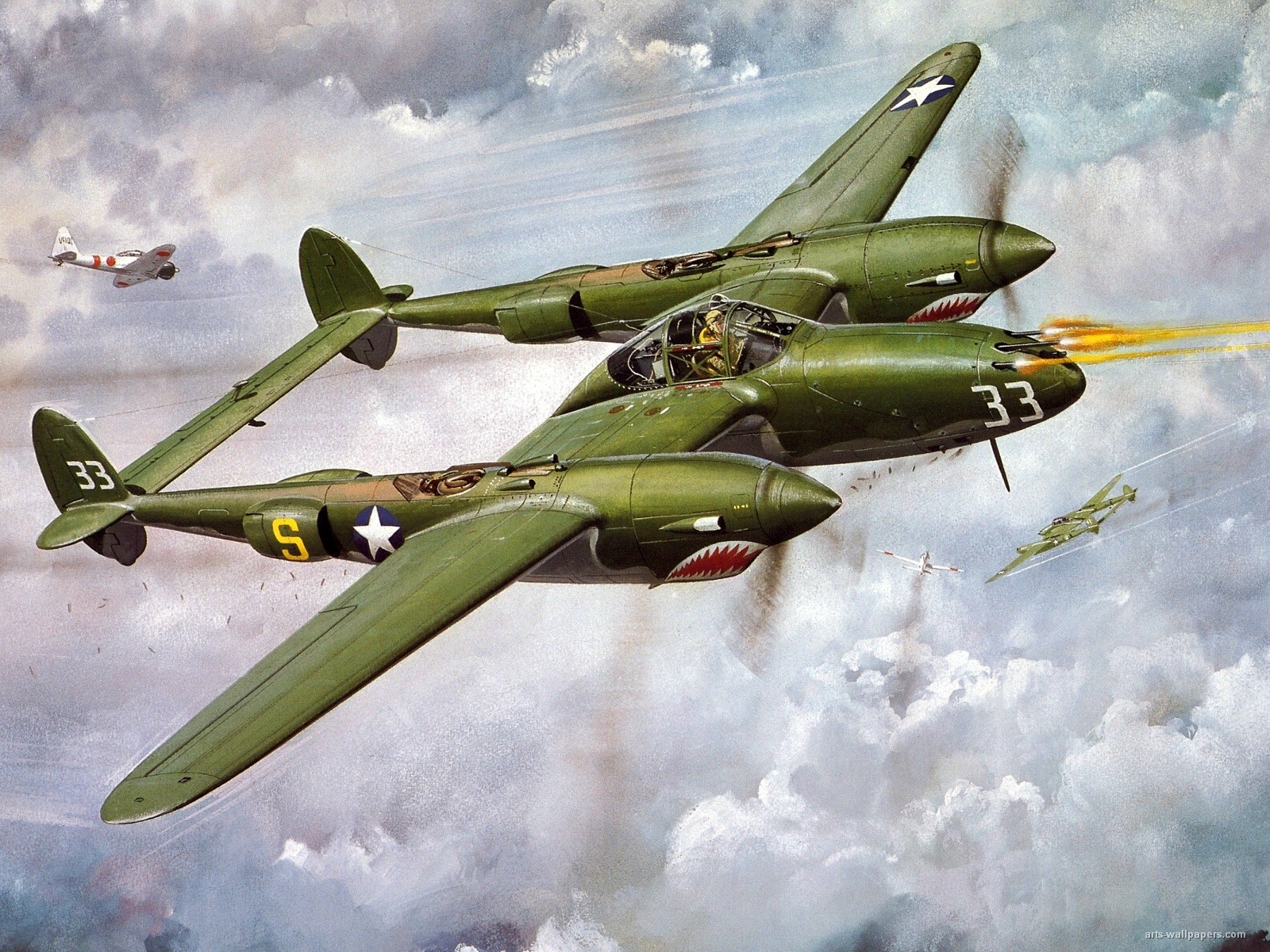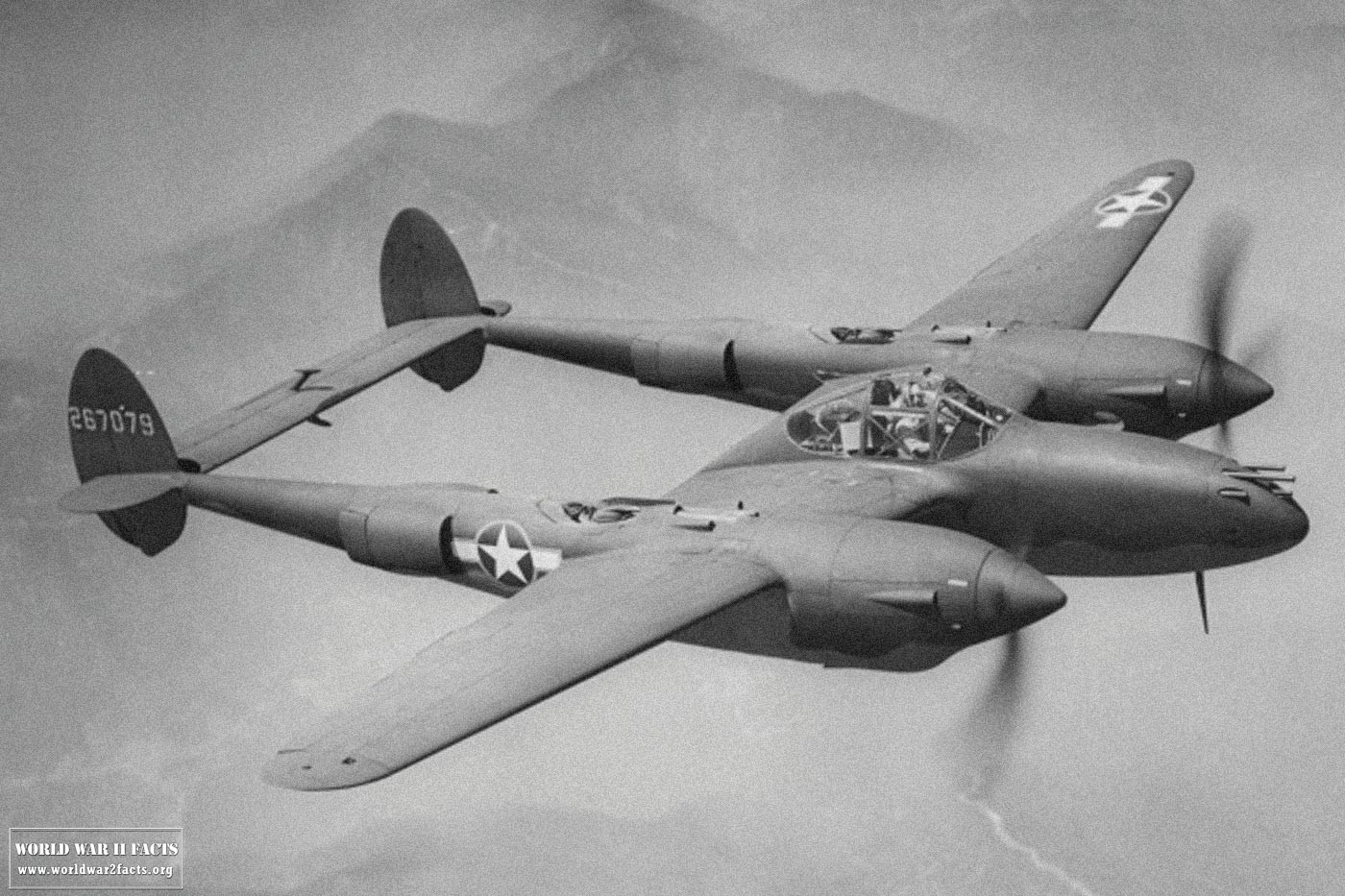Lockheed P-38 Lightning Fighter Plane

Introduction to the Lockheed P-38 Lightning

The Lockheed P-38 Lightning is a World War II-era fighter plane that played a significant role in the war. It was a revolutionary aircraft that featured a unique design, with a central fuselage and two outer booms that housed the engines and tail sections. The P-38 was designed by Clarence “Kelly” Johnson, a renowned aeronautical engineer, and it first flew in 1939. The plane’s distinctive design and impressive performance made it an iconic symbol of American airpower during World War II.
Design and Development

The P-38 was designed to meet a US Army Air Corps requirement for a high-altitude interceptor. The plane’s designers aimed to create an aircraft that could reach high speeds and altitudes while maintaining maneuverability and firepower. The P-38’s unique design featured a central fuselage that housed the cockpit, armament, and other essential systems. The two outer booms, which were connected to the central fuselage by wings, housed the engines, fuel tanks, and tail sections. This design allowed for a high degree of stability and control, making the P-38 an excellent platform for combat.
Key Features and Specifications

The Lockheed P-38 Lightning had several key features that made it an effective fighter plane. Some of its notable specifications include: * Length: 37 feet 10 inches (11.53 meters) * Wingspan: 52 feet 0 inches (15.85 meters) * Height: 12 feet 10 inches (3.91 meters) * Empty weight: 12,800 pounds (5,806 kilograms) * Gross weight: 17,600 pounds (7,983 kilograms) * Powerplant: 2 x Allison V-1710-111⁄113 liquid-cooled engines, 1,600 horsepower each * Maximum speed: 414 miles per hour (666 kilometers per hour) * Range: 1,300 miles (2,092 kilometers) * Service ceiling: 44,000 feet (13,411 meters) * Armament: 1 x 20mm Hispano M2© cannon, 4 x 0.50-inch M2 Browning machine guns
Operational History

The P-38 saw extensive action during World War II, serving in various theaters, including the Pacific, European, and North African campaigns. The plane’s unique design and impressive performance made it a formidable opponent in combat. The P-38 was used for a variety of missions, including air-to-air combat, ground attack, and reconnaissance. Some notable operational highlights include: * Pacific Theater: The P-38 played a significant role in the Pacific, where it was used to escort bombers, conduct ground attacks, and engage enemy fighters. * European Theater: The P-38 was used in Europe to escort bombers, conduct reconnaissance, and engage enemy fighters. * North African Campaign: The P-38 saw action in North Africa, where it was used to support ground operations and engage enemy aircraft.
Tactical Advantages and Disadvantages

The P-38 had several tactical advantages that made it an effective fighter plane. Some of its key advantages include: * Speed and maneuverability: The P-38 was highly maneuverable and had a top speed of over 400 miles per hour, making it an excellent platform for air-to-air combat. * Firepower: The P-38 was heavily armed, with a 20mm cannon and four 0.50-inch machine guns, making it a formidable opponent in combat. * Range and endurance: The P-38 had a long range and high endurance, making it an excellent platform for long-range missions. However, the P-38 also had some disadvantages, including: * Complexity: The P-38 was a complex aircraft, with a unique design and sophisticated systems, which made it challenging to maintain and repair. * Vulnerability to icing: The P-38’s engines were prone to icing, which could lead to engine failure in certain conditions.
🚨 Note: The P-38's unique design and complex systems made it challenging to maintain and repair, which sometimes affected its operational effectiveness.
Legacy and Impact

The Lockheed P-38 Lightning played a significant role in World War II, and its legacy continues to inspire aircraft designers and enthusiasts today. The P-38’s unique design and impressive performance made it an iconic symbol of American airpower, and its contributions to the war effort were invaluable. The P-38 also paved the way for future aircraft designs, influencing the development of modern fighter planes.
The P-38’s impact on the war effort was significant, and it played a key role in several major campaigns. The plane’s ability to escort bombers, conduct ground attacks, and engage enemy fighters made it a versatile and effective platform. The P-38’s legacy continues to be celebrated by aircraft enthusiasts and historians, and it remains one of the most iconic and recognizable fighter planes of World War II.
In summary, the Lockheed P-38 Lightning was a revolutionary fighter plane that played a significant role in World War II. Its unique design, impressive performance, and tactical advantages made it an effective platform for combat, and its legacy continues to inspire aircraft designers and enthusiasts today.
To recap, the key points of the Lockheed P-38 Lightning include its unique design, impressive performance, and significant contributions to the war effort. The P-38’s legacy continues to be celebrated, and it remains one of the most iconic and recognizable fighter planes of World War II.
What was the primary role of the Lockheed P-38 Lightning during World War II?

+
The primary role of the Lockheed P-38 Lightning during World War II was as a fighter plane, used for air-to-air combat, ground attack, and reconnaissance missions.
What were some of the key features and specifications of the Lockheed P-38 Lightning?

+
The Lockheed P-38 Lightning had a unique design, with a central fuselage and two outer booms that housed the engines and tail sections. It had a top speed of over 400 miles per hour, a range of over 1,300 miles, and was heavily armed with a 20mm cannon and four 0.50-inch machine guns.
What was the significance of the Lockheed P-38 Lightning in the context of World War II?

+
The Lockheed P-38 Lightning played a significant role in World War II, serving in various theaters and contributing to the war effort through its versatility, range, and firepower. Its unique design and impressive performance made it an iconic symbol of American airpower, and its legacy continues to inspire aircraft designers and enthusiasts today.



